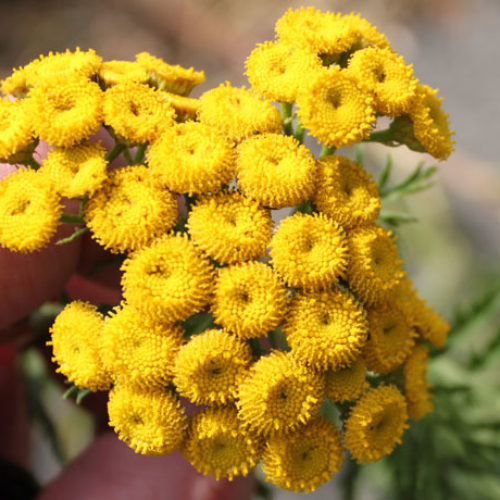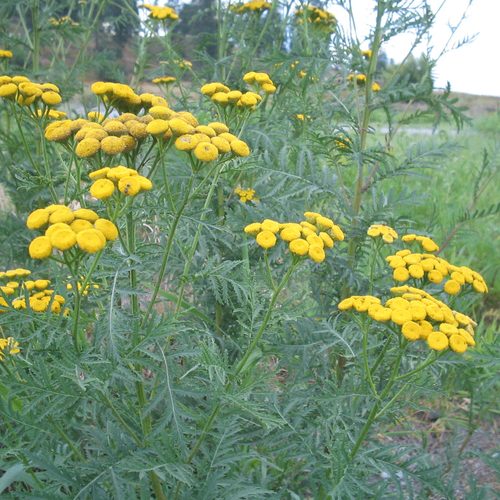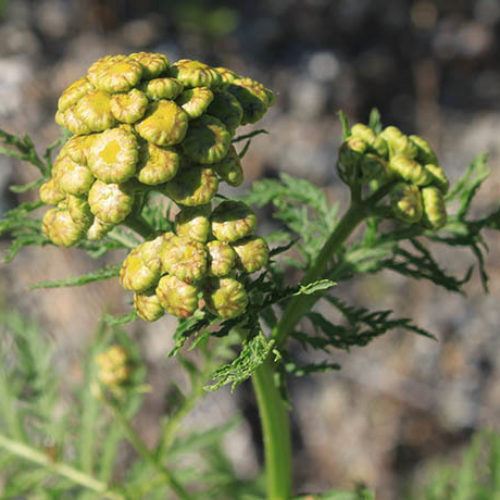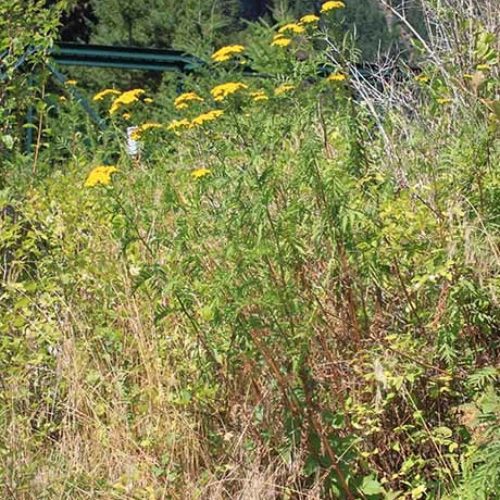Common Tansy
Tanacetum vulgare
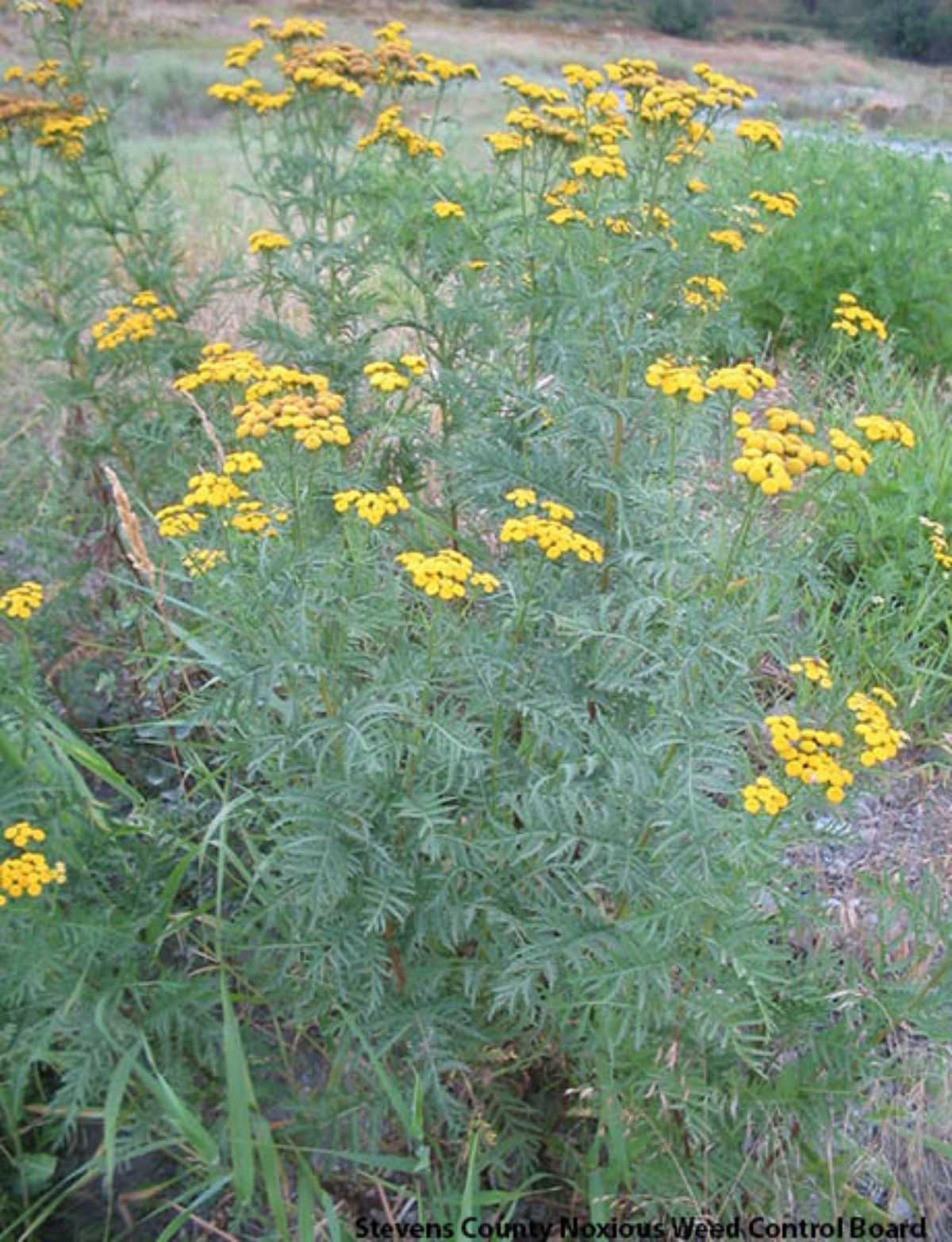
Family: Asteraceae
Other Common Names: garden tansy
Weed class: B
Year Listed: 1988
Native to: Asia and Europe
Is this Weed Toxic?:
humans, livestock
Why Is It a Noxious Weed?
Common tansy is reported to be poisonous to livestock, though it is seldom grazed due to its strong odor. It displaces forage plants, reduces wildlife habitat and species diversity.
How would I identify it?
General Description
Common tansy is an aromatic perennial with rhizomes, reaching 1 to 5 feet tall, with fern like foliage and yellow button-like flowers.
Flower Description
Flowerheads are numerous, button-like and yellow. They are 1/4 to 1/2 inches across in flat-topped dense clusters. Flowerheads composed of all disk flowers and are absent of ray flowers.
Leaf description
Leaves are alternate and pinnately compound (leaflets arranged on both sides of a common stalk). They are deeply divided into numerous, narrow, toothed segments. Leaves become smaller towards the top of the stalk and are strongly aromatic when crushed.
Stem description
Plants have multiple stems that are brown to reddish-brown and dotted with glands.
Fruit Seed Description
Seeds are small (1 to 2 mm), gland dotted and with ribs. Seeds have crown shaped pappus.
May Be Confused With
Common St. Johnswort (Hypericum perforatum) a Class C noxious weed and tansy ragwort (Senecio jacobaea), a Class B noxious weed, may be mistaken for common tansy. Common St. Johnswort flowers have 5 petals per flower while common tansy does not have any petals (ray flowers) and and tansy ragwort has on average of 13 'petals' (ray flowers). Click here to see a comparison of the flowers of these species. If you need help with plant identification, contact your county noxious weed coordinator.
Where does it grow?
Common tansy is generally found along roadsides, waste areas, streambanks and in pastures. Please click here to see a county level distribution map of common tansy in Washington.
How Does it Reproduce?
Common tansy reproduces by numerous tufted seeds dispersed by wind and water. It also reproduces vegetatively by forming new plants from root fragments.
How Do I Control It?
General Control Strategy
Remove seeds from personal gear, equipment, machinery, vehicles, and animals before leaving an infested area.
Manual/Mechanical Control
Wear gloves when handling plants. Individual plants and small infestations can be hand-pulled (in damp soil) or dug up. Monitor and remove any resprouts. Mow or cut infestations before flowering and seed-set occur to eliminate seed production. Mowing alone will not kill plants so multiple treatments will be required to exhaust the plant's resources. Monitor treatment success continuously over successive years.
Cultural Control
Minimize soil disturbance and re-vegetate any disturbed areas promptly. Maintain a healthy native plant community. Monitor and identify areas where invasions of common tansy are likely to occur. Burning is not recommended for controlling common tansy.
Herbicide Control
Please refer to the PNW Weed Management Handbook, or contact your county noxious weed coordinator.
For More Information
See our Written Findings for more information about common tansy (Tanacetum vulgare).
Report on common tansy from the book "Weed Control in Natural Areas in the Western United States"
King County Noxious Weed Control Board Best Management Practices
Lincoln County NWCB Fact Sheet on common tansy



